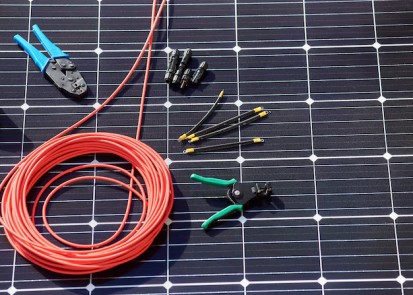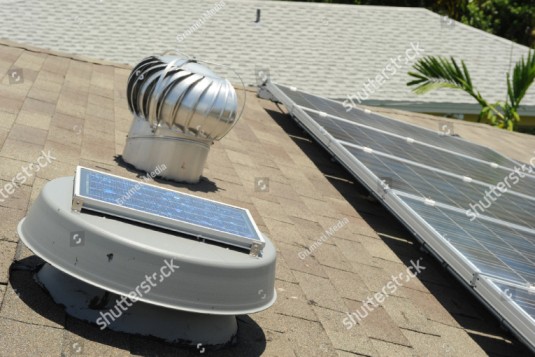Solar Panel Connectors Explained
A solar panel has numerous solar cells that convert solar energy to electrical energy. This panel must be connected to other components like an inverter and a battery for which different types of wiring systems are used. One such important wiring system is the Solar Connector. A solar connector establishes the connections within the array of the solar panels and finally connects them to an inverter for conversion of DC to AC.
As there are various types of solar panels, so are the various types of connectors designed to perform different functions. This blog describes the parts of solar connectors and types of connectors. Finally, it assists in choosing the right type of connector.
You might also like:
25 Myths About Solar Factchecked
What are solar panel connectors?
A Solar panel connector helps to connect all the solar panels with each other. These panels are further connected to an inverter with these connectors. The solar connectors had drawbacks like breakdown due to mechanical stress and were prone to corrosion. Other than this, only trained technicians could set up these connectors. Hence, there was a need to modify these connectors.
The solar modules can be connected in parallel, in series, or a combination of the two depending on the energy requirements.
Parts of A Connector
Today, there are countless numbers of solar panel connectors available in the market. All the connectors have a few differences. Yet, a major similarity is the components. Every connector has 2 components, a male connector, and a female connector.
Male Connector:
A male connector is also known as a plug. It has a solid pin for a central conductor. They have wider spacing between the pins and a wider opening as compared to a female connector.
Female Connector:
A female connector is also known as a jack. A jack has a hole in the center conductor for it to receive the male connector.
To learn more about these connections, every panel has two wires extending from the junction box. A junction box is already in connection with the panel. Of the two wires from the junction box, one of them carries a DC positive (+) charge while the other carries a DC negative (-) charge. A male connector is connected to the positive charge of one solar panel, whereas a female connector is connected to the negative charge of another solar panel. Thereby establishing an interconnection between the solar panels.
Why do you need a connector?
Apart from the interconnection within the solar panels, it also connects these panels to the inverter. Before sending the energy to the inverter, either the resulting voltage or wattage can be amplified. This can be achieved by simply arranging the same number of modules in either series, parallel, or combination.
When the panels are connected in series, the voltage is increased. Whereas the panel when connected in parallel increases voltage. Thus, depending on the energy demands, one can decide to set up panels in either series, parallel, or a combination of both for optimum results.
Moreover, connectors reduce the risk of electrical arcing, as they can cause a severe hazard to the solar power system. Usually, high-quality connectors are designed to resist harsh weather conditions as well as UV rays. The connectors for solar panels also minimize electrical hot spots, thereby preventing the occurrence of fire accidents. Overall, it ensures that solar panels are connected securely to a power station to generate electricity.
Types of solar panel connectors
Other than the popularly used MC4 connector, other options are available in the market like MC3, Tyco Solarlok, Amphenol H4, Sunclix, Soladeck, Anderson Powerpole, Tigo, Helios H4, and MC5. Though the MC4 is proven to date. Here, we discuss the most common MC4, MC3, Amphenol H4 and Tyco Solarlok it in detail:
MC4
An MC4 connector refers to multi-contact and 4 is its diameter size in millimeters. Nowadays, large solar panels are connected via MC4 connectors due to its advantages over others. A small solar panel does not need an MC4 connector because it is installed as a stand-alone unit producing less than 20 watts of electric current. On the contrary, large solar panels producing more than 20 watts often require these connectors for standardized termination in arrays to handle the high voltage.
The MC4 connector is weatherproof, does not open in case of heavy load like MC3, and is versatile. Hence, is the most reliable option in the market. After all, it has an IP65 rating!
MC3
An MC3 connector was the former choice before the MC4 entered the picture. The connector has a 3mm in diameter single contact plug for the male connector to mate with the socket shell designed for the female connector. An MC3 connector is still used for the modules installed before the emergence of an MC4 connector. connector is similar to an MC4 connector but has a different locking mechanism and low current carrying capacity as opposed to an MC4 connector.
Amphenol H4 connector
These connectors are efficient to be used for diverse types of solar panels, including thin-film panels as well. They have an impressive rating of 52A. It’s rapid, and effortless, and has a secure NEC 2008-compliant locking mechanism and the most advanced secure snap-lock mating mechanism. Apart from this, the connectors also meet NEC 2008 standards without additional components.
Not only do they endure UV rays for 25 years, but also abrasion, extreme temperatures, and corrosion, it has an IP67 waterproof rating. What’s more? The components like UL, TUV, and DIN V are eco-friendly confirming the international standards. Therefore, is the reliable option for a panel irrespective of its type.
Tyco Solarlok Connectors
“Old is gold”, and so are Tyco Solarlok connectors. The Tyco company has manufactured not only the connectors but also the wires for solar panel installation. The Tyco company has produced connectors since the 2000s and has set the benchmark in the field. Like MC3, these connectors are still found installed in the older modules. They have been the “Hero” in the earlier days of solar installations and have made an appreciable contribution to the growth of the solar energy market.
Connectors Compared
Here’s a table highlighting the differences and the similarities in the above-discussed connectors:
Criteria | MC4 | MC3 | Amphenol H4 | Tyco Solarlok |
Cable Cross-Section (mm2) | 2.5 – 10 | 2.5 – 10 | 2.5 – 6 | 4 – 6 |
Contact Material | Tin-platted copper | Tin-platted copper | Tin-platted copper | Tin-platted copper |
Rated Current | 39 – 104A | 20 – 43A | 15 – 45A | 20 – 30A |
Max. Voltage | 1,000V | 1,000V | 1500V | 1500V |
IP Index | IP65 | IP68 | IP68 | IP65 |
Max. Temperature | 105ºC | 105ºC | 120ºC | – |
Safety Class | II | II | II | II |
Safety Mechanism | Plug lock | None | Plug lock | Plug lock |
Locking/Unlocking Tool | Useful but not required | Not required | Required | Required |
How to choose a connector?
Not just choosing an appropriate solar panel is crucial, but also choosing the right connector holds paramount importance. Picking the right kind of solar panel connector will ensure the flawless working of the PV system for decades. Routine maintenance may be conducted every few years, but it is less likely for you to change a solar panel connector once installed if you decide on the right one.
Here are the key points to check to vote for the most suitable solar panel connector for you:
- Maximum Voltage Capacity
A connector should be able to withstand your solar panel’s voltage. This is essential to prevent any potential hazard. Hence, check the maximum voltage of the connector.
- Maximum Current Capacity
Make sure the connector can handle the amount of electric current produced by your panel. The consideration of the maximum current capacity to ascertain the optimal performance and safety is crucial.
- Temperature Resistance
Just like solar panels should have the capability to endure extreme temperatures and temperature fluctuation, connectors should possess temperature resistance too. Such a connector shall promise the expected longevity and reliability.
- Low Contact Resistance
Go for a connector with low contact resistance in order to reduce the loss of energy and enhance the system’s efficiency.
- Contact Material
The material used for the connector is equally important because it affects the performance and durability of the connector. A high-quality material such as silver or gold-plated should be ideally chosen to make sure the connector has excellent conductivity and is resistant to corrosion.
- IP Index
The IP index refers to the Ingress Protection index. It states the potential of the connector to withstand dust and water. Deciding on a connector with a high IP rating shall guarantee the protection of the solar installation against environmental elements and aid its longevity.
- Safety Class
A suitable safety class of the connector to minimize risks involved in the process of installation and operation. The safety class of the connector marks that it is designed and tested to meet the necessary safety standards.
- Wire Cross-Section (Wire Size)
For having a secure and efficient connection, a connector that is compatible with the wire cross-section used in the solar panel installation is a vital factor in choosing the right connector.
Conclusion
To summarize, a solar panel connector is nothing but an electrical wiring system to interconnect the solar panel and direct the energy generated to an inverter. A simple-sounding system is as important as a solar panel and the other components. Like the varied types of panels available, there are different types of connectors with different benefits. Despite the variety of options, MC4 is currently the most liked one by buyers. The type of connector does not merely depend on the type of solar panel, but also your energy energy demands.
A connector needs to withstand the required voltage and watt of energy generated by the panels. The connectors can allow the panels to be connected in series, parallel, or combination as per your needs. While choosing the right connector there are key factors that need to be considered like material, resistance, safety class, and the IP index to make sure you end up with the right one.
Frequently Asked Questions
MC4 is the most common solar panel connector. But there are other options available like Amphenol H4 producing promising outcomes.
Yes, all modern-day solar panels make use of MC4 connectors. However, the old-installed panels still use old connectors like Tyco Solarlok.
A panel requires a pair of MC4 connectors, a male and a female connector.




